Welcome to Cheap Chance Cinema where I’m letting the gods of luck take the wheel – that’s right, each feature is going to revolve around a randomly selected movie from a free streaming site. To make the name of this feature work, all of these movies will need to be cheap! And really…what’s cheaper than free?
Episode 1 – Amityville: The Awakening (2017)
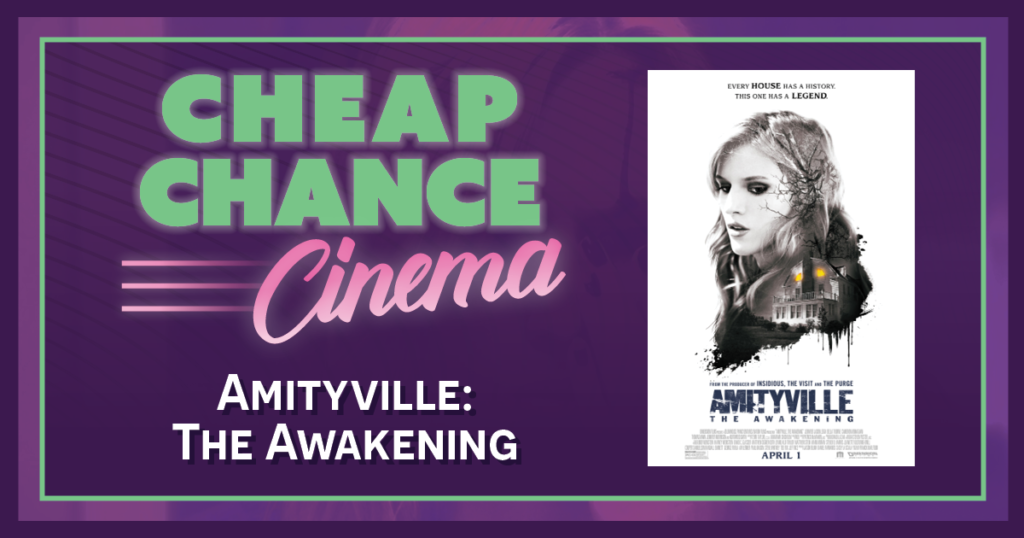
For this introductory episode of Cheap Chance Cinema, I used a website that randomly selected from movies currently available on Tubi. That movie selected for this episode? Amityville: The Awakening. A title that at least feels appropriate for the first entry.
But before I go any further into Amityville: The Awakening (and don’t worry, I will get into it), I’d like to take a moment to talk about the shockingly long legacy of Amityville movies. Right now, before Googling the answer, take a guess as to how many Amityville movies you think exist? Five? Ten?
28! Insane, right?! When searching for Amityville: The Awakening on Tubi, I was immediately taken aback to find over 20 movies with Amityville in the title. And if there were 20 Amityville movies available for free (with commercials), then how many Amityville movies were actually out there in the wild? If I can watch Amityville Karen or Amityville in Space on Tubi, who knows what else is out there with the Amityville brand attached to it. PSA: Remember, always spay and neuter your franchises!
Joking aside, I did a bit more research into this and it seems that there are only 11 movies attributed to the actual Amityville canon. However, if you’re counting movies with Amityville in the title that are banking off of that concept, there are a whopping 28 movies based around the infamous haunted house. For added context, the number of Amityville movies is only a few movies shy of equalling the Marvel Cinematic University (MCU) for its prolific output.
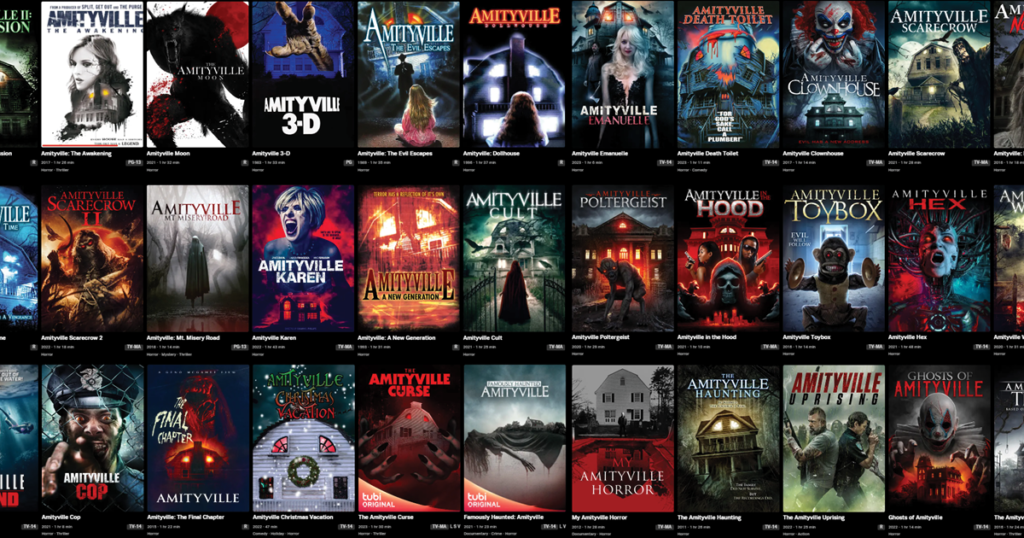
As for my exposure to the Amityville series…well, with Amityville: The Awakening now under my belt…well, I’ve seen two of them. The only other Amityville movie I had seen up until this point was the 1979 original, The Amityville Horror. Looking over the list of Amityville movies available, I consider myself quite lucky to have only seen two. It’s doubtful that any of the sequels or spin offs come close to recapturing the magic of the original, but I could be wrong – and if I am, please let me know which ones are worth a watch.
It’s Amityville Karen, isn’t it? That’s surely the deftly executed satire I’m imagining it is, right? Hello? Anyone?
Moving on – it should be noted that in addition to my relatively limited exposure to the Amityville franchise, Amityville: The Awakening happened to be a title that I had never heard of or seen advertised for…this is admittedly something of a rarity for me. If I had to make an educated guess before seeing a single frame of footage, I’d wager that I had never heard of Amityville: The Awakening because it was pretty much straight-to-video fare.
Looking at the poster/streaming art didn’t do much to help instill any confidence. Though it was perfectly competent and fine, it shed absolutely no additional light on any details or specifics. It’s about as generic as they come, only featuring the Amityville house and a Photoshopped impression of some young actress.
I’m Going in Blind
If nothing else, the prospect of something completely new and unknown was exciting. You know as well as I do that it’s hard nowadays to stay ahead of aggressive marketing campaigns and trailers that love to share as many details as possible to get butts in seats. Speaking for myself, by the time I finally sit down to watch a movie, I’m usually aware of the actors/actresses, writers, and directors involved…aware of some of the plot details, the set-pieces…even big reveals are placed in trailers released only a week or two into a movie’s run.
So I chose to go into Amityville: The Awakening filled with hope. It was a blank slate that could be anything and starring any number of actors/actresses. I cannot tell you how magical these few minutes were.
But I’m not going to bury the lead any longer. That magic was temporary and fleeting and I was foolish to have had any hope in Amityville: The Awakening.
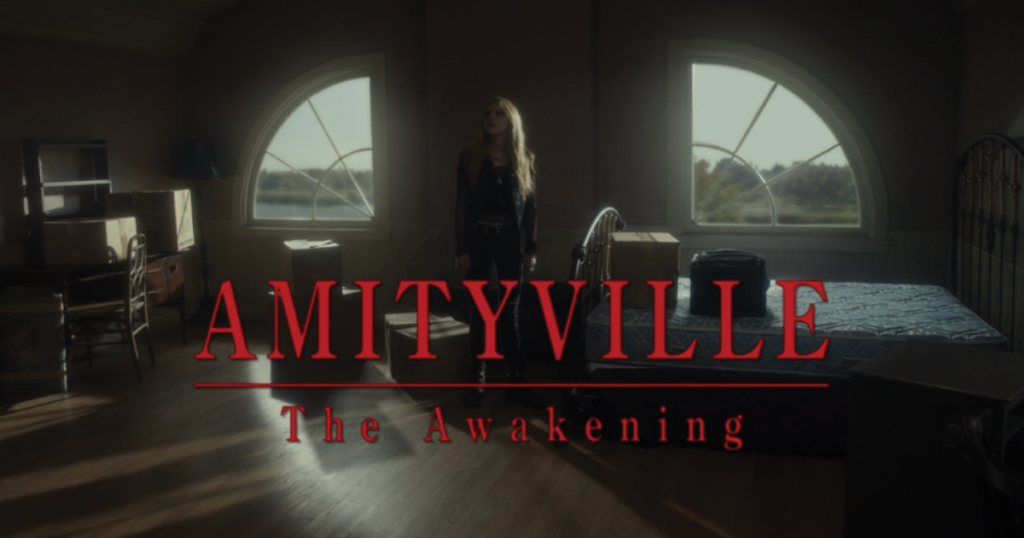
It all started off promising enough, with the opening credits revealing that Amityville: The Awakening has a rather strong cast of actors, including Jennifer Jason Leigh, Cameron Monaghan, McKenna Grace and even Kurtwood Smith in a smaller, supporting role for good measure! This cast is all built around the main protagonist, played by Bella Thorne, an actress I’m not too familiar with outside of her supporting role in The Babysitter movies currently available on Netflix.
The Babysitter movies were admittedly dumb, campy fun, and with McG at the helm, they weren’t really meant to be acting showcases…even if Samara Weaving did turn in a surprisingly nuanced and memorable performance than either of those movies deserved. Everyone else surrounding Samara Weaving though? A bit stiff and cartoonish. With that said, I’m not holding Bella Thorne’s performance in those movies against her and went in with lowered expectations but wanting to be won over from her now that she was given the chance to prove herself in a leading role. That, like before, proved to be foolish.
Thorne feels completely miscast and seems ill equipped to handle a lot of the emotional work being asked of her. The lazy, uninspired script is equally to blame, as it doesn’t really give her character (or any other character here) much depth or nuance.
So aside from Bella Thorne, Amityville: The Awakening’s casting seems relatively strong, but what of the movie itself?
Honestly? The first few scenes are surprisingly solid, if unremarkable, setting the mood with visuals and imagery rather than exposition. Sadly, this is only momentary and we are mere minutes away from a big ol’ exposition dump. But back to the opening shots, many of them are pretty strong visually – showcasing some interesting compositions within the camera frame. The director here, Franck Khalfoun (P2, Maniac), implements a good variety of angles that help to create some fascinatingly framed shots.
And as pleasant as the framing is visually, I would be lying if I said that I thought it meant anything at all. In Amityville: The Awakening, there isn’t a reason for anything to be framed in the way it is. Certain angles are only used because they look interesting. There is nothing in the visuals or cinematography here that brings any bit of extra depth or subtext. It’s all for mood setting and aesthetic.
Drive and the Art of Subtextual Framing
Tangent Time! One of my go to examples for artfully including subtext into cinematic framing is from 2011’s slow-burn masterpiece, Drive – directed by the masterful Nicholas Winding Refn. In Drive, Ryan Gosling plays an emotionally detached stunt driver who slowly forms a relationship with a woman in his apartment building, Irene (Carey Mulligan). His mysterious character, who we only know as Driver, eventually reveals more about himself over the course of the movie and by the end it’s made clear to all the other characters (and to us audience members) exactly who the Driver is, both in terms of his character and his after hours profession.
This character journey is perfectly captured visually as well. Before the Driver reveals what he does to Irene, he is portrayed within the camera frame in ways that make him visually stand out from her and other characters. Often, these shots make him feel very isolated, perfectly relaying his character’s mindset and emotional state. The Driver is desperate to connect with a real human being and sees that chance in Irene – but he also feels something holding him back. In the entire first half of Drive, Gosling and Mulligan are never placed close together in a scene and are often disjointed and unequal within the camera frame. This naturally changes in a pivotal and magical elevator scene in the third act, one of Drive’s true highlights.
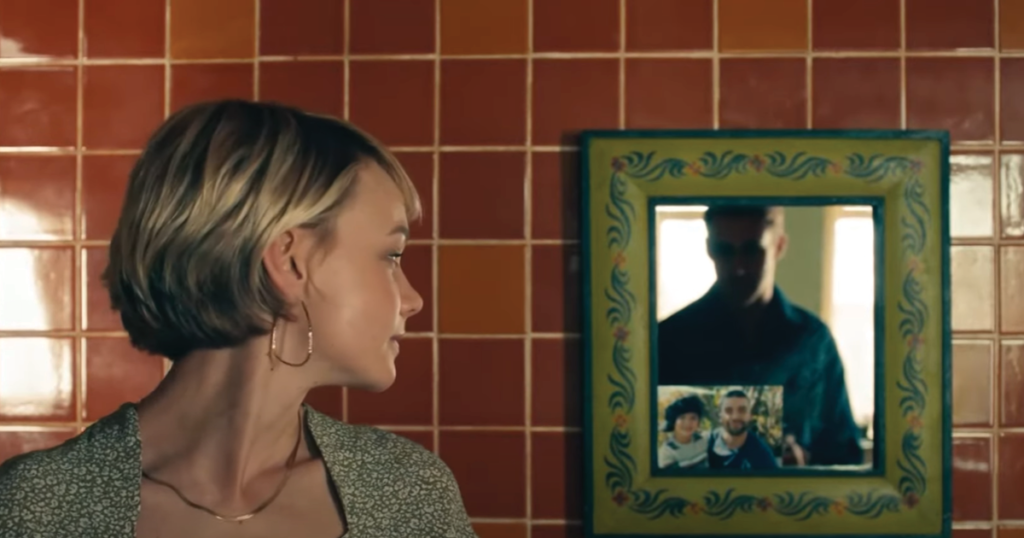
The best visual example of Gosling’s self-imposed and internalized distance is in a scene where he’s been invited into Mulligan’s apartment and is beginning to learn more about her and her family. The scene is a great moment for character-building, with information being delivered through naturalistic dialogue. However, this entire scene is also framed in a way that can be read entirely through its visuals alone.
The conversation between the Driver and Irene cuts back and forth between isolating shots of the two, portrayed alone in their own frames. There is one shot that serves as the exception, placing the two within the same frame. But even during this exception, the two characters are not on the same plane, literally. If you’d like to extrapolate that idea out further, they’re not even in the same world metaphorically. Through visuals alone, the two are kept separated from one another, with the Driver seen in a reflection on the mirror behind Mulligan’s character.
An added clever detail in this scene is the inclusion of a photo of Irene’s family tucked into the corner of that same mirror…one more barrier standing in between the Driver’s idealized relationship with Irene. This family photo could even be read as a visual manifestation of the Driver processing what to do with the information he’s been given and the very conflicted feelings he’s experiencing.
This is the ultimate tragedy of Drive, and it’s communicated visually in a scene that works on multiple levels – it is both aesthetically interesting, standing out from other shots in Drive (and other movies in general), but it also adds some brilliant subtext as a nice bonus for those who are looking for it. Even if you are not looking for that added subtext, you can bet your brain is picking up on it subconsciously. Or to quote Red Letter Media, “You may not have noticed it…but your brain did!”
Amityville: The Awakening Doesn’t Know What Subtext Is
This is all to reiterate that Amityville: The Awakening’s framing, as interesting as it may initially seem, offers no added subtext and only satisfies one criteria: looking neat. Unfortunately, even neat shots don’t last long as the camerawork begins incorporating more and more generic shots and framing. Pretty much everything that you’d come to expect from this type of movie. There is variety though: generic and uninspired shots of highschool interiors/exteriors and generic and uninspired darker shots of the Amityville interiors designed to invoke the spookies, but it only manages to invoke yawns.
And I really can not stress just how flatly shot the majority of Amityville: The Awakening is. There’s nothing surprising or unexpected – everything ends up feeling like stock, PG-13 horror cinematography after a certain point with nothing memorable or noteworthy to speak of.
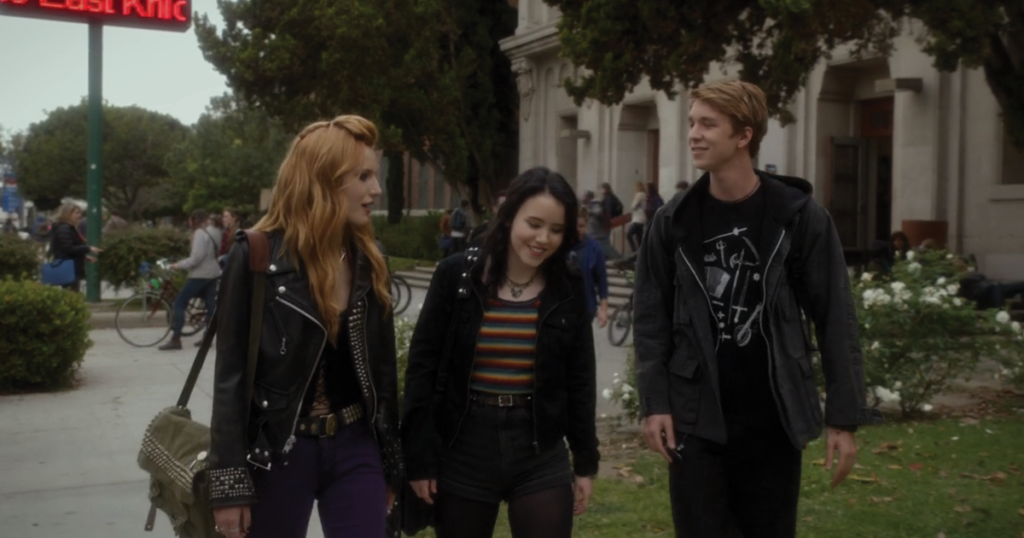
On the other hand, the story is very surprising in its ambition. It completely squanders that ambition with the inclusion of tonally jarring plot elements that don’t gel with the demonic hijinks inherent to the Amityville brand. Or at least that’s what I would expect from the Amityville brand looking from the outside in.
Maybe if Amityville: The Awakening had more time to flesh out some of these ideas there could have been some interesting commentary on family structures and guilt/grief. Instead, the filmmakers chose the wet noodle approach to ideas and characters and seemingly threw it all at a wall and saw what would stick…all within a crammed eighty-six minute runtime. The result is about what you would expect: a movie that feels like it’s been ripped to shreds in the editing room. Ideas and characters are underserved by a thin plot rushing to get to its twist that A.) is alluded to a bit too much throughout the second act to be remotely impactful and B.) infuriatingly undermines the main conflict at the heart of the movie and retroactively ruins much of what came before it.
It’s hard not to compare Amityville: The Awakening to some of the best horror movies available right now, and let’s be honest, we all know what I’m hinting at…the A24 types. I’m talking about The Lighthouse, The VVitch, Midsommar, Lamb, Saint Maud, Get Out, Nope, and many others. Each and every one of these movies I mentioned can be interpreted in a multitude of ways thanks to their often open-ended nature and careful inclusion and usage of symbolism and metaphor. In stark contrast, once Amityville: The Awakening had reached its very literal resolution, I was left with only one way to read it – and I hated it.

Expect spoilers from here on out.
Amityville: The Awakening’s basic setup is this: Joan (Jennifer Jason Leigh) has decided to move her family into the notorious Amityville house due to its affordability and location near the family’s neurosurgeon (Kurtwood Smith) who is currently assisting Joan’s comatose son, James (Cameron Monaghan). This alone is honestly a strong start for a ghost movie and sets up the seeds for exploration into legitimately unnerving, existential horror. To its benefit, the script wisely adds in another juicy tidbit to spur on potential drama by revealing that Joan’s oldest daughter Belle (Bella Thorne) feels guilty over her involvement in James’ accident causing him to wind up in his current state.
Since this is the Amityville house and it is a horror movie, weird occurrences naturally begin happening to Belle and her family. But before I continue that thought, I need to talk about how Amityville: The Awakening approaches the Amityville lore. In a really gutsy move, The Awakening decides to introduce some metatextual nods by having the Amityville murders, as well as all of the Hollywood (and off Hollywood) movies surrounding it, co-exist in the same universe. That means that not only did the Amityville murders actually take place in 1974 in this universe, but the motion picture based around those events, The Amityville Horror, was released 5 years later, mirroring its release in our world in 1979. Do you remember the Amityville remake with Ryan Reynolds? Well, it also exists in this universe and of course, Amityville: The Awakening tries to be a bit too clever for its own good by throwing in a dig at remakes for some quick cred. This of course backfires and only calls attention to its own laughable existence as a reboot (which isn’t exactly far removed from a remake)..
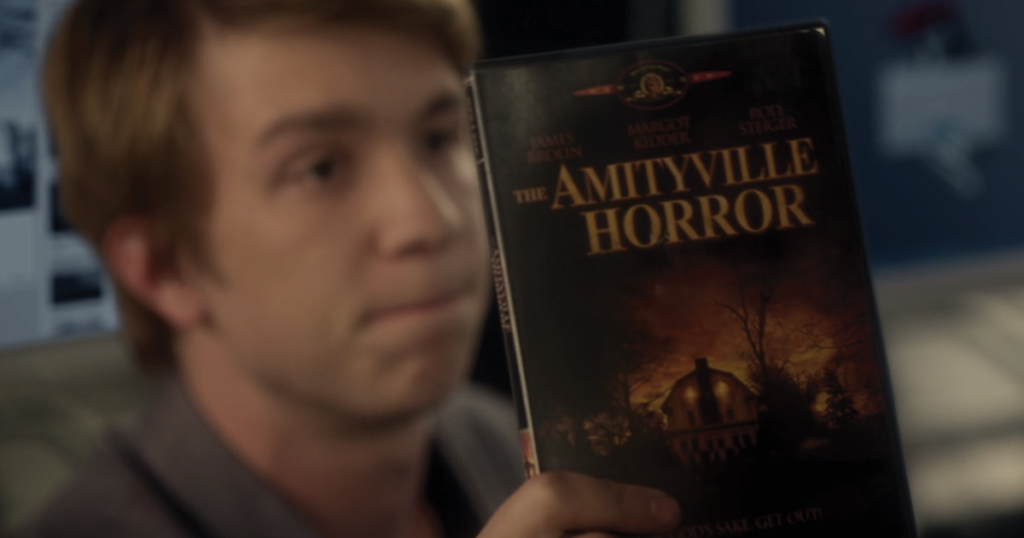
But back to the spooky stuff happening to Belle’s family – all of these weird occurrences seem to revolve around James. Metaphorically, this all makes perfect sense, James’ comatose state is haunting Belle, clearly still dealing with the guilt and demons (so to speak) of the accident. James’ condition is the catalyst for the drama and tension within the family so it’s appropriate to thematically tie the demonic possession so closely to James.
As solid of an idea as this might be…it is all undone by Joan’s character and the big reveal that Amityville: The Awakening has been building to. By the end of the first act, we’re given a few scenes and lines that begin to hint at where the script is going with Joan’s increasingly manic love for James. In one scene about 30 minutes in, Joan is left by others and is sitting alone with James by his bedside. She looks over at him and says with a very knowing demeanor, “I would do anything for you James, I love you more than anything in the world”. I’m paraphrasing, but this line telegraphs exactly how the third act is going to unfold. Just you wait.
Sure enough, we’re shown that Amityville house’s infamous “Red Room” is linked to James, but it wasn’t just a coincidence or the house choosing a victim – it was actually Joan’s doing all along. In a painfully blunt, expository speech, Joan declares that she had completely given up on God and all religions after James’ accident. The best route forward? Asking the notorious demonic entity from the Amityville murders for help!
Without much more context, you can probably already start to see how thin of a leap in logic it is for Joan to get to the point where the idea of summoning a demon into her son is a brilliant idea. It’s a character arc that rings false and feels even more hollow knowing that Joan is fully complicit in the evil acts. Maybe if she were to become possessed or influenced by the demonic entity which helps explain some of her actions later on, because by the movie’s end, Joan sacrifices the family dog and was prepared to sacrifice her other two children for James’ well-being. If Amityville: The Awakening’s intention was to thematically weave in the idea of a mother’s love into the story of a demonic possession – it becomes crystal clear that The Awakening didn’t know what hell it was doing.
Amityville: The Victim-Shaming
So we’ve got some uninspired cinematography, rote storytelling only interested in surface level drama, and an exceedingly dumb twist that threatens to topple the entire production. I wasn’t enjoying Amityville: The Awakening with these issues, but I also wasn’t hating it either. That is until the final revelation and what it implies for Belle and Joan’s relationship.
It turns out that the inciting incident for all of this was a fight where James was trying to defend his sister’s honor without her knowledge of it. In what has to be one of the most infuriating storytelling choices I’ve witnessed in a good while, it’s revealed that Belle was seeing a boy from her previous school who ended up not being much of a good guy at all. While fooling around, he took some compromising photos of her and later placed them online for everyone to see.
James, outraged over this, goes to confront the boy responsible for posting the photos only to end up completely overestimating his fighting prowess. James is promptly and (with how it’s revealed laughably) thrown from the apartment building, going over a balcony several stories up.
With the revelation of this crucial detail, it is made perfectly clear that Belle had no knowledge of James’ actions until after he was hurt. Mind you we’ve been watching Belle internalize and beat herself up over her involvement in James’ state – and judging from this reveal, she seemingly has zero culpability. The movie completely fails in setting up a good reason for her guilt and anguish. It makes her sad, goth-girl getup feel even more hollow and empty.
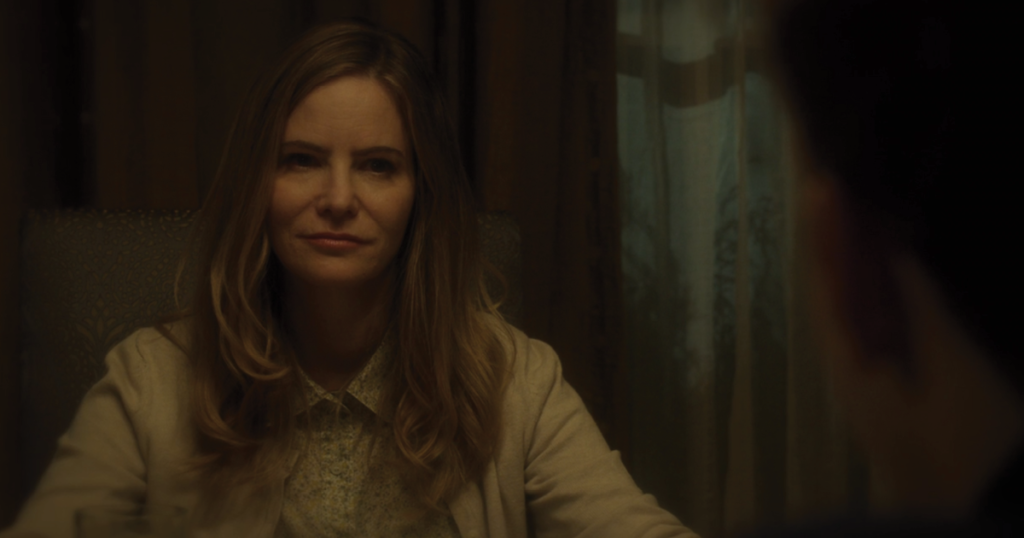
Worse, is that it completely undercuts any sympathy that could be given to Joan, the mother, who uses any chance to berate Belle for what she did to James. Again, if the intention was to make Joan an out and out villain, Amityville: The Awakening bungles that by trying to appeal to base emotions with “dedicated” love for James. She’s not an interesting or complex antagonist – she’s just an ineptly written one.
Joan’s involvement with demonic possession and Belle’s complete lack of involvement in James’ accident absolutely killed Amityville: The Awakening’s entire narrative for me. These third act reveals retroactively make the entire movie a lesser – and one could argue, altogether meaningless – experience.
If there was ever a moment where I had second-thoughts about my displeasure in the storytelling, the brazenly ambiguous, “non” ending was sure to set me over the edge. In what might be Amityville: The Awakening’s most visibly lazy move, the ending uses an off camera narrator (ala Unsolved Mysteries) to speculate wildly on what happened to Belle and Juliet (McKenna Grace) without choosing to commit to a single one. That’s right. Amityville: The Awakening just kind of ends, because I think no one involved with the movie actually gave a damn about the characters. An utterly symbolic way to wrap up a movie that phoned in most of it – great job team!
Ultimately, I didn’t really find much that I enjoyed with Amityville: The Awakening, nor would I recommend it to anyone. Like, at all. I’m left annoyed and soured by Joan’s character and just how wrong-headed the Belle reveal was. Avoid this one.
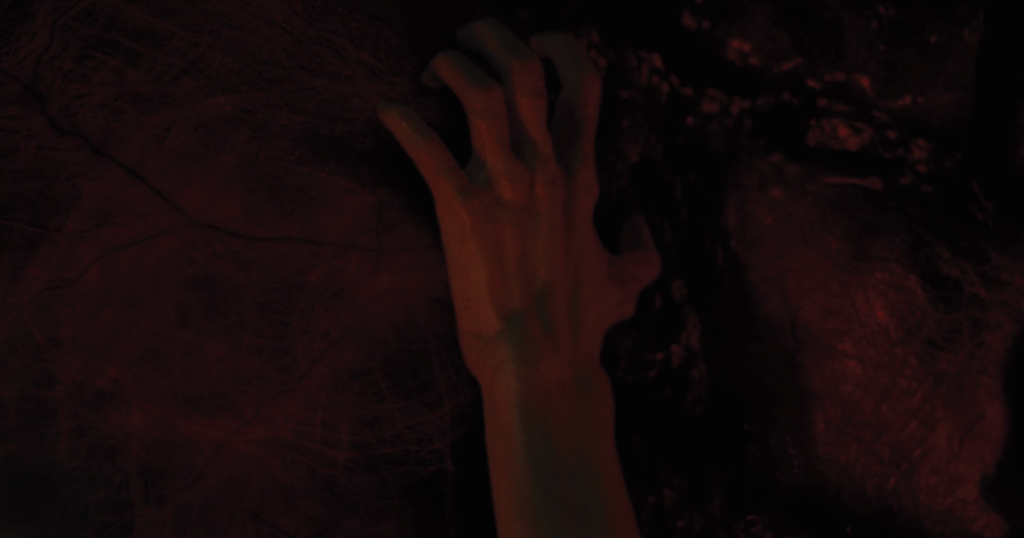
Whatcha Paying For It, Stranger?
As of late 2022, the average price for a first run movie ticket was $11.75 which will be the standard for Cheap Chance Cinema’s review system. Taking my opinions and reactions to Amityville: The Awakening into consideration, and with that median ticket price of $11.75 being the best possible rating, Amityville: The Awakening is worth roughly:
